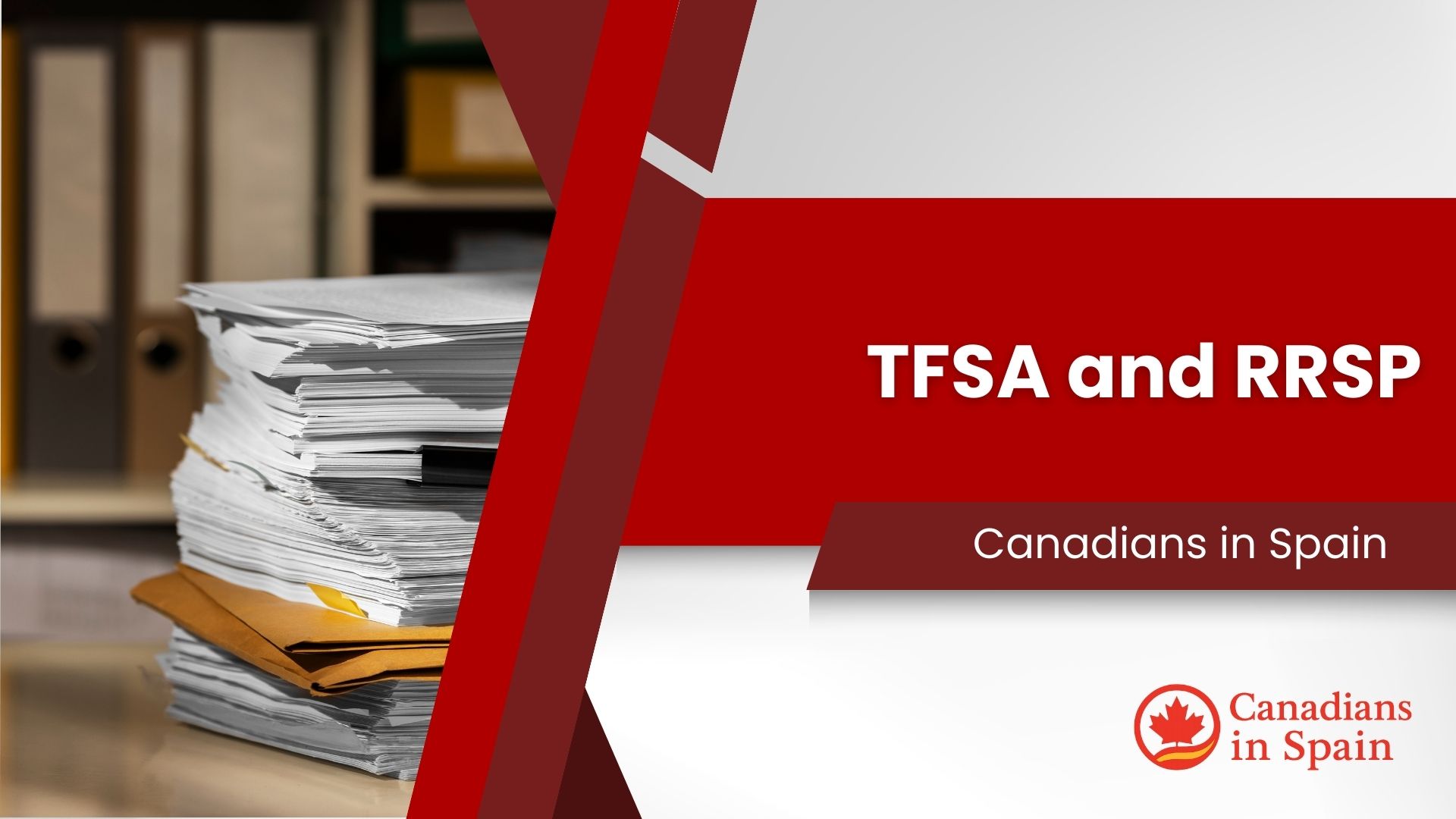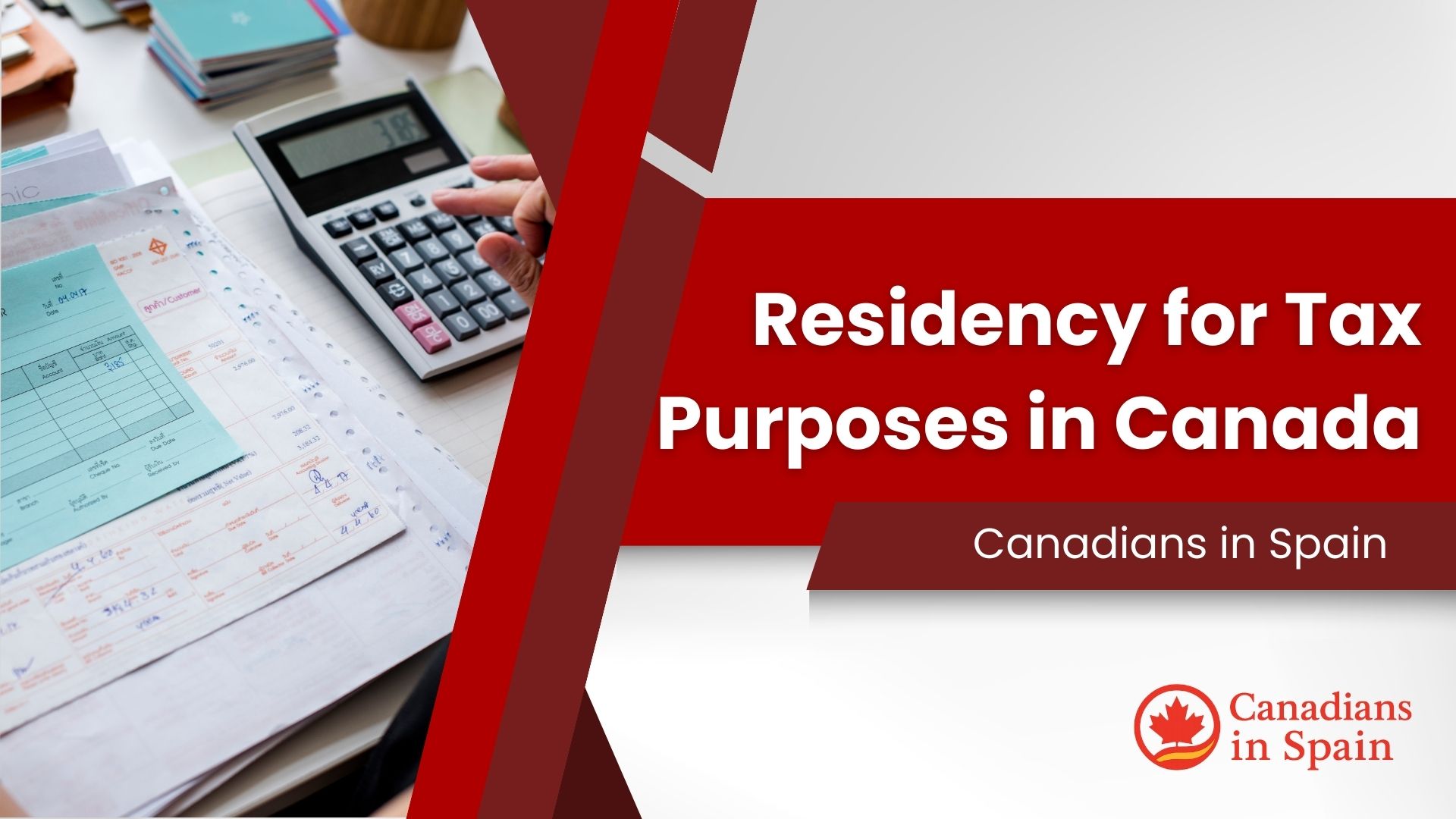The Ultimate Guide: What Happens to Your TFSA and RRSP When You Move to Spain?
Moving from Canada to Spain is a dream come true for many. But if you’re one of the thousands of Canadians considering the move, it’s crucial to understand how your Canadian retirement savings – namely your TFSA and RRSP – will be treated under Spanish tax law. Misunderstanding these rules can lead to unexpected tax bills and significant financial stress.
This blog post offers a comprehensive look at what happens to these accounts once you become a Spanish tax resident, including a breakdown of the Canada-Spain Double Taxation Agreement (DTA) and practical examples to help you plan effectively.
Understanding Tax Residency in Spain
Once you become a tax resident in Spain, you are taxed on your worldwide income. You are generally considered a resident if you:
- Spend more than 183 days in Spain in a calendar year, or
- Have your center of economic or personal interests located in Spain.
This means any income you earn or withdraw from abroad, including from your TFSA and RRSP, becomes subject to Spanish tax rules. The Canada-Spain DTA exists to help avoid being taxed twice, but it does not make all income tax-free.
RRSPs: Deferred, But Not Untouchable
How RRSPs Work in Canada vs. Spain
An RRSP allows you to defer taxes on contributions and investment gains until withdrawal. Once you move to Spain:
- Canada will impose a 15% withholding tax on RRSP withdrawals under the DTA.
- Spain will include the entire withdrawal in your general taxable income, taxed at your marginal rate (from 19% to 47%).
- Crucially, the 15% withheld in Canada is credited against your Spanish tax liability, preventing double taxation.
Example: Tax on a €30,000 RRSP Withdrawal
Let’s walk through a simplified example, assuming you live in Andalucia with other income of €27,000:
- You withdraw the equivalent of €30,000 from your RRSP.
- Canada withholds 15% (€4,500), which is paid to the CRA.
- Spain taxes the full €30,000 at your marginal rates.
- The first €10,200 is taxed at 30% = €3,060
- The remaining €19,800 is taxed at 37% = €7,326
- Total Spanish tax = €10,386
- You receive a Spanish tax credit for the Canadian withholding = €4,500.
- Net Spanish tax due = €5,886
Tip: Strategically timing and sizing your withdrawals can significantly reduce your tax burden.
TFSAs: The Critical Change – No Longer Tax-Free
How TFSAs Work in Canada
TFSAs allow Canadians to earn investment income tax-free for life. Withdrawals are also tax-free.
The Spanish Perspective on Your TFSA and RRSP
Spain does not recognize TFSAs as tax-exempt retirement accounts. This is the most critical takeaway for your TFSA and RRSP planning.
- Any capital gains, interest, or dividends earned inside your TFSA are fully taxable annually in Spain.
- You must report this income on your annual Declaración de la Renta.
- If your TFSA holdings exceed €50,000, you must also file Modelo 720, Spain’s foreign asset reporting form. Non-compliance with Modelo 720 can result in severe penalties.
Strategic Implications
If you’re moving to Spain, you should strongly consider:
- Withdrawing your TFSA funds before becoming a tax resident.
- Reallocating those investments into more tax-efficient vehicles recognized by Spain.
- Consulting with a cross-border financial planner to discuss your options.
Practical Considerations Before Your Move
- Timing is Everything: If possible, consider taking large RRSP withdrawals while still a Canadian resident to take advantage of Canada’s potentially lower overall rates, especially in a year with little other income.
- Hire Professional Help: Work with a tax advisor experienced in both Canadian and Spanish systems. Mistakes in managing your TFSA and RRSP can lead to costly penalties.
- Keep Up With Reporting Obligations: As a Spanish resident, you must report your worldwide income annually. This includes all gains and withdrawals from your Canadian accounts.
Frequently Asked Questions (FAQ)
What is the single biggest mistake Canadians make with their TFSA and RRSP when moving to Spain?
The biggest mistake is assuming the TFSA remains tax-free. Many new expats fail to declare the annual gains inside their TFSA on their Spanish tax return, which can lead to significant back taxes and penalties when discovered.
Should I close my RRSP before moving to Spain?
Not necessarily. The tax-deferred growth is still beneficial. However, some Canadians choose to collapse their RRSP in a year of low income before moving to pay all the tax in Canada at a lower average rate. This is a complex decision that requires professional advice.
Can I still contribute to my TFSA and RRSP while living in Spain?
Once you are a non-resident of Canada for tax purposes, you can no longer contribute to your TFSA. Your RRSP contribution room will not increase, but you can generally contribute up to your existing limit. However, you will not get a tax deduction for it in either Canada or Spain, making it a poor financial strategy.
How does Spain find out about my Canadian accounts?
Through the Common Reporting Standard (CRS), an international agreement for the automatic exchange of financial account information. Canadian financial institutions report information on accounts held by Spanish residents to the CRA, which then shares that information with the Spanish tax authorities.
Does the 15% Canadian withholding tax on my RRSP apply to all types of withdrawals?
The 15% rate applies to periodic pension payments. For lump-sum withdrawals, the Canadian withholding tax rate can be higher (up to 30%), but the Canada-Spain DTA generally allows you to apply to the CRA to have it reduced to 15%.




